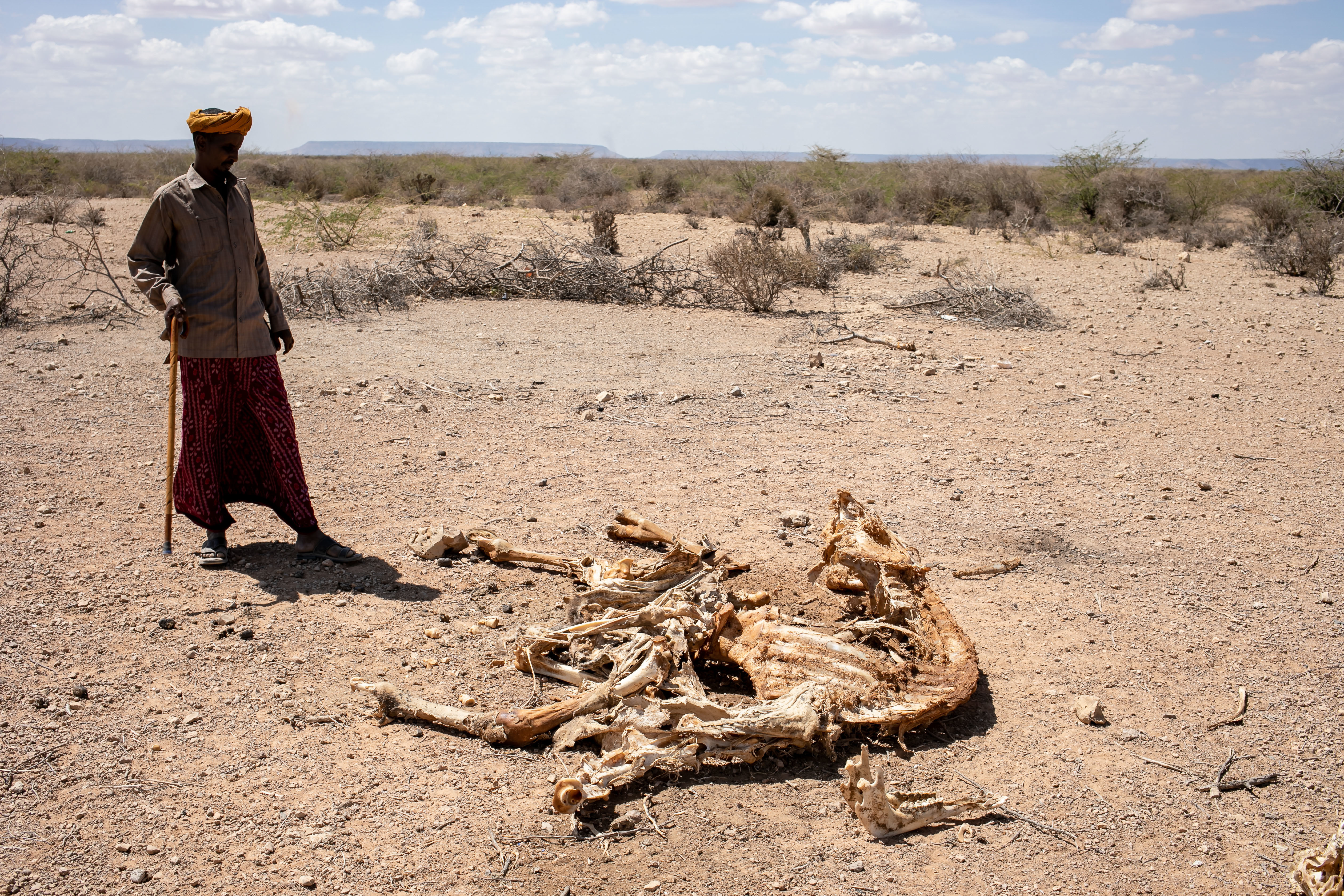Somalia: Rural families hard hit by drought in Hirshabelle State
Widespread and severe food insecurity persists in Somalia and over 4 million Somalis are expected to be severely food insecure in the first half of 2022, with 2 million of them living in rural areas affected by drought. Bringing assistance to rural areas, as close as possible to affected communities, will prevent massive displacement, related aggravating risks and excess mortality. Every 1 USD to protect rural livelihoods saves around 10 USD in food-related assistance. The time to act is now.
In the Hirshabelle region of southern Somalia, those pastoral families that have reached their limits to cope with the extreme drought are now moving to urban centres in search of assistance. Rural families in Guricade village receiving cash transfers agricultural assistance have been able to remain in their their homes to endure the dry conditions. FAO is assisting rural families in the region to cope with the drought through its emergency Cash+ programme, with thanks to the generous support of USAID. (OSRO-SOM-106-USA)
Severe drought conditions are driving acute food insecurity across the Horn of Africa, affecting not only rural communities in central and southern Somalia but in southern Ethiopia and the arid and semi-arid land regions of Kenya. Under FAO’s regional Drought Response Plan, USD 80.4 million (out of a total of USD 130) is needed to provide time-critical assistance to highly vulnerable pastoral communities in drought-hit regions of Somalia. The plan aims to safeguard their assets, food and income sources and prevent further displacement and increases in humanitarian needs.
In the Hirshabelle region of southern Somalia, those pastoral families that have reached their limits to cope with the extreme drought are now moving to urban centres in search of assistance. Rural families in Guricade village receiving cash transfers agricultural assistance have been able to remain in their their homes to endure the dry conditions. FAO is assisting rural families in the region to cope with the drought through its emergency Cash+ programme, with thanks to the generous support of USAID. (OSRO-SOM-106-USA)
Severe drought conditions are driving acute food insecurity across the Horn of Africa, affecting not only rural communities in central and southern Somalia but in southern Ethiopia and the arid and semi-arid land regions of Kenya. Under FAO’s regional Drought Response Plan, USD 80.4 million (out of a total of USD 130) is needed to provide time-critical assistance to highly vulnerable pastoral communities in drought-hit regions of Somalia. The plan aims to safeguard their assets, food and income sources and prevent further displacement and increases in humanitarian needs.
12/04/2022

